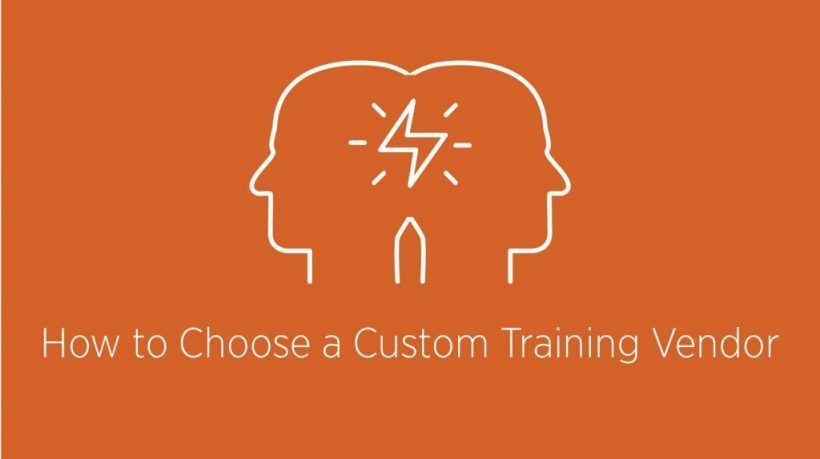Do Your Employees Need Custom Or Off-The-Shelf Training?
In a time when nearly every industry is being reshaped by digital transformation, employee training is facing its own moment of reckoning. Organizations are asking hard questions: How do we ensure learning actually leads to performance? Are we just checking the box, or are we building capability? One decision often at the heart of this discussion is whether to rely on off-the-shelf (OTS) courses or invest in custom training solutions. Both have their place, but they serve very different purposes. And in 2025, as employee expectations evolve and business agility becomes a survival trait, custom training is emerging as a strategic differentiator.
Why The Shift Is Happening Now
In my two decades of building learning solutions for teams across industries, one pattern has become unmistakable: training only works when it's relevant. Generic content might fill a gap, but it rarely changes behavior. And behavior change is the real goal.
A 2024 LinkedIn Learning survey showed that 83% of L&D leaders are now focused on aligning learning with business outcomes. That alignment is difficult—if not impossible—when you rely entirely on off-the-shelf content. The next generation of training needs to move beyond "content delivery" to "capability building." And that's where custom learning comes into play.
The Value Of Custom Training: A Layered Impact
Let's break it down across four critical layers of learning:
1. Knowledge
Custom courses are built around your processes, terminology, tools, and standards. Instead of learning about generic industry terms, learners engage with scenarios and language that actually reflect their jobs. This immediately boosts relevance and comprehension.
2. Understanding
By integrating real workflows and common decision points into the training journey, learners aren't just memorizing—they're making connections. Adaptive content and contextual storytelling can dramatically improve how well concepts "stick."
3. Application
Application is where many off-the-shelf solutions falter. Custom programs can include simulations, role-plays, and interactive case studies that replicate real decisions employees make. Practicing in safe, digital spaces builds confidence before performance is required on the job.
4. Synthesis
When you want learners to go beyond execution and begin solving new problems, custom training that includes immersive elements, such as Virtual Reality or branching scenarios, can simulate complexity in a controlled way. That's where synthesis happens.
What The Data Tells Us
The numbers support this strategic pivot:
- Personalized learning improves retention by up to 60%.
- Immersive training increases engagement by 42% [1].
- Role-aligned custom content drives 30% higher competency gains [2].
Off-the-shelf content still has a role to play—especially in areas like compliance, standard soft skills, or quick knowledge refreshers. But for skills that tie directly to performance, the Return On Investment from custom solutions is measurably higher.
Real-World Scenarios That Make The Case For Custom Or OTS Training
Let's say you're rolling out a new CRM platform across your sales team. An off-the-shelf training module might show users how to create contacts or log activities. But what about your custom lead-scoring system? Or your industry-specific pipeline stages? Or how sales and marketing are expected to collaborate using tags?
Those gaps are where training breaks down. A generic video may explain what a feature does, but not how your team should use it to close deals. That difference shows up in adoption rates, in the number of support tickets, and ultimately in your revenue pipeline.
Choosing The Right Path
There's no universal rule here. Each organization should assess their training strategy based on:
- Complexity of the skill (compliance vs. decision making).
- Uniqueness of internal systems/processes.
- Risk associated with errors.
- Employee demographics (e.g., digital natives vs. multi-generational teams).
- Budget and deployment timeline.
Some hybrid approaches also work well. Use off-the-shelf for foundational knowledge and build custom layers on top that tie into real workflows. It's about designing learning that's fit-for-purpose, not one-size-fits-all.
Future-Proofing With Intention
Looking ahead, it's clear that learning needs will only grow more nuanced:
- AI will allow deeper personalization, adjusting content in real time based on learner performance.
- Mobile-first microlearning will dominate for distributed and frontline teams.
- Immersive tech—whether VR, AR, or simulation labs—will become more accessible for skills training.
But technology is just an enabler. The real transformation happens when organizations take ownership of their learning culture and build solutions that reflect their people, their priorities, and their potential.
Custom training isn't about flashy tools or buzzwords. It's about designing better learning outcomes. And in a world where skill gaps can be the biggest bottleneck to growth, that's an investment worth making.
TL;DR
- Custom training aligns with company goals, language, and workflows.
- It improves retention, application, and real-world performance.
- Off-the-shelf content is fast, but often lacks relevance.
- The smartest strategies blend both, focusing on custom content where it matters most.
If we want to unlock transformational learning in 2025 and beyond, we must move from convenience to intention, because learning should never just check a box. It should build your people.
References
[1] 6 Key Benefits of Immersive Learning Technologies for Onboarding
[2] Superagency in the workplace: Empowering people to unlock AI's full potential










